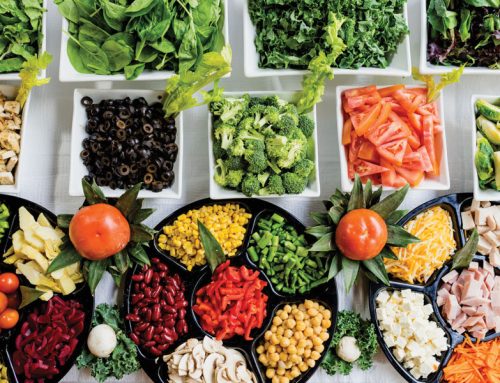Counting calories, carbs and points can take up a lot of time and make the joy of cooking and eating an unenjoyable task. Always eagerly anticipating the final tally only to be left feeling discouraged and often guilty. Keeping body fat at bay isn’t all that hard if you’re armed with the facts.
A 2007 study in the American Journal of Clinical Nutrition, which followed two pre-diabetic groups who ate the same number of calories and percentage of fat, protein, carbohydrate and fiber, demonstrated the difference. The only difference between the two groups was the type of carbs they consumed. In the group that ate whole kernel rye products, dozens of genes that had made participants fat and diabetic were turned off and genes that helped them become healthy and thin were turned on.
If you consistently eat food that spikes your insulin level, you will gain weight. If you eat food that reduces your insulin level you will lose weight. Simple right? So how do you start?
Generally a good rule of thumb is to avoid eating anything that has more than seven ingredients. If you can’t pronounce any of its ingredients, don’t eat it. Adequate dietary fat contributes to numerous physiological processes, helps you absorb valuable nutrients, and keeps you full so you eat less. You need fat to burn fat and we’re not talking MacDonald’s cheeseburgers and trans-fat laden baked goods.
Good fats come from whole foods sources like avocado, olive and coconut oils, cold water fish like salmon and halibut, and nuts and seeds. Make sure you include one to two servings of healthy fat at every meal and snack. One serving = 4 oz cold water fish, 1 tablespoon of oil or nut butter or 5-10 nuts.
A study in the journal Nutrition Reviews showed that 14 grams of fiber a day, with no other dietary restrictions, helped people lose an average of 4 pounds over four months. To get all of fiber’s benefits, shoot for at least 30 grams each day. Lentils, raspberries, avocado, and nuts like almonds are all packed with fiber. Flaxseed, chia, and or a fiber powder in your morning smoothie also helps meet your quota.
The right carbs such as fruits, vegetables, legumes, and other whole foods come packed with nutrients. Likewise, protein and fat help build muscle, support fat burning and keep you satisfied. At mealtime, fill half your plate with non-starchy veggies, one quarter with lean, clean protein, and one quarter with a high-fiber, whole food, low-glycemic starchy carbohydrate. Make sure to include at least one servings of fat. That’s all the measuring necessary to keep your weight stable, your belly happy, and your cravings at bay.
Source: http://beta.active.com/nutrition/articles/the-truth-about-calories-fat-and-fiber?cmp=17-3-5385
Photo courtesy of freepik.com







